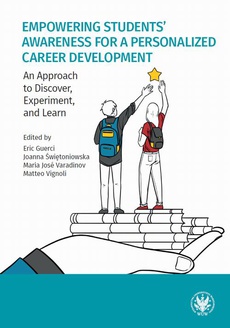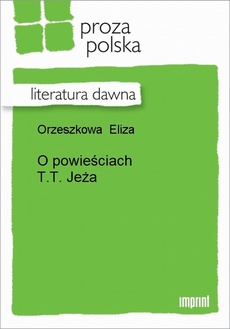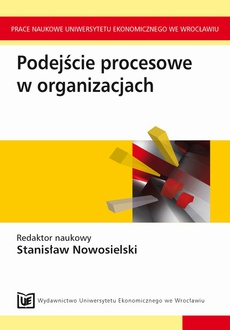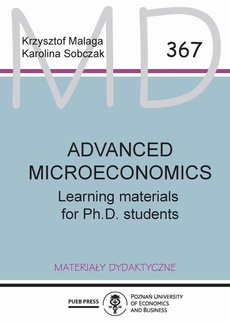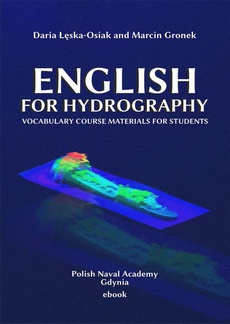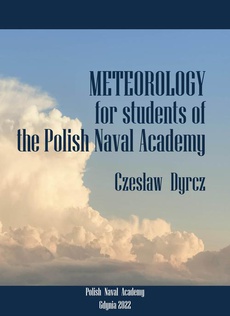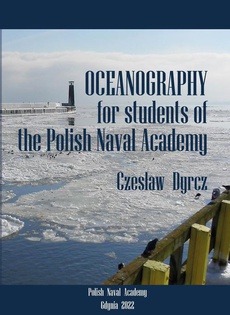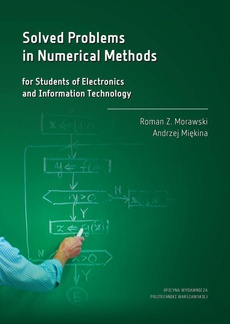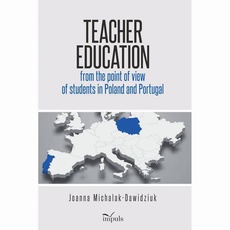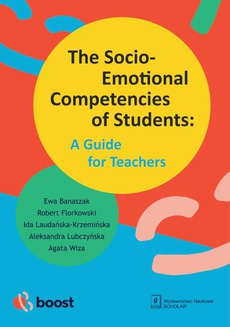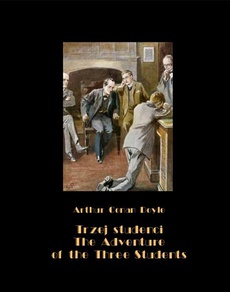POLECAMY
Empowering Students’ Awareness for a Personalized Career Development
An Approach to Discover, Experiment, and Learn
Wydawca:
Format:
ibuk
This book provides university administrators, professors, and career specialists with a comprehensive introduction to the BE(A)ST (BE Aware Student) approach. The BE(A)ST approach aims at enhancing students’ awareness of personalized career development, fostering a connection between their professional identity, beliefs, and actions to support career awareness. With the BE(A)ST approach, we provide a solution to improve the alignment between the career and the life of our students. The Personalized Career Development (PCD) course based on the BE(A)ST approach and described in this book is the result of three research programs focused on the development of the method and on its adaptation, scientific validation, and dissemination.
This book is a must-read for anyone who is serious about career planning, life design or teaching about these ideas. It includes an extremely well researched and authoritative review of all the major books, methods and tools available and advances the state-of-the-art. With suggested improvements and refinements. It also packages these tools into several different university-level workshop and course formats and provides the authors' experiences with delivering these programs to students across different disciplines, cultures and countries.
(Steven A. Gedeon, BSc, MSc, MBA, Peng, PE, PhD, Associate Professor, Entrepreneurship and Strategy Department
Ted Rogers School of Management, Toronto Metropolitan University (formerly Ryerson University), Canada)
The publication is licensed under the Creative Commons Attribution-Share Alike 3.0 Poland license (CC BY 3.0 PL) (full license available at: http://creativecommons.org/licenses/by/3.0/pl/legalcode).
******
Książka – przeznaczona dla kadry zarządzającej wyższych uczelni, nauczycieli akademickich i doradców zawodowych z uczelnianych biur karier – zawiera kompleksowe wprowadzenie do metodyki BE(A)ST (BE Aware Student). Metodyka ta ma na celu podniesienie świadomości studentów w zakresie spersonalizowanego rozwoju kariery oraz wzmocnienie związku między ich profilem zawodowym, własnymi przekonaniami a podejmowanymi działaniami wspierającymi świadomy wybór ścieżki rozwoju zawodowej. BE(A)ST jest zatem rozwiązaniem umożliwiającym dopasowanie kariery i życia osobistego studentów. Kurs Spersonalizowanego Rozwoju Kariery (Personalized Career Development – PCD) oparty na metodyce BE(A)ST i opisany w prezentowanej książce to wynik trzech programów badawczych skupionych na rozwoju metody oraz na jej adaptacji, naukowej walidacji i upowszechnieniu.
Publikacja na licencji Creative Commons Uznanie autorstwa 3.0 PL (CC BY 3.0 PL) (pełna treść wzorca dostępna pod adresem: http://creativecommons.org/licenses/by/3.0/pl/legalcode).
| Rok wydania | 2022 |
|---|---|
| Liczba stron | 204 |
| Kategoria | Publikacje darmowe |
| Wydawca | Uniwersytet Warszawski |
| ISBN-13 | 978-83-235-5694-7 |
| Numer wydania | 1 |
| Język publikacji | angielski |
| Informacja o sprzedawcy | ePWN sp. z o.o. |
Ciekawe propozycje
Spis treści
| Introduction 9 | |
| Personalized Career Development course at a glance | 10 |
| Origins and approach to the course design | 10 |
| Personalized Career Development course general | |
| guidelines | 11 |
| Personalized Career Development course structure and | |
| tools | 12 |
| What you’ll find in the following chapters | 13 |
| CHAPTER 1. New world of work – new challenges 15 | |
| 1.1 Understanding the challenges | 15 |
| 1.2 The European Union context: programs addressing the challenges | 16 |
| 1.3 Learning styles for a new generation | 18 |
| 1.4 New challenges from the labor market | 21 |
| 1.5 Challenges in career planning: the labor market and the students’ perspective | 23 |
| 1.6 Rationale for a new approach | 26 |
| CHAPTER 2. BE(A)ST – an agile approach to discover, experiment, and learn 31 | |
| 2.1 Motivations & aims of the BE(A)ST approach | 32 |
| 2.1.1 Labor market changes and their influence on | |
| career development | 32 |
| 2.1.2 Career development as a wicked problem | 33 |
| 2.1.3 BE(A)ST approach motivations and aims | 35 |
| 2.1.4 BE(A)ST in the context of the foundations of | |
| traditional and modern approaches | 36 |
| 2.2 BE(A)ST approach structure – different frameworks, one unified methodology | 41 |
| 2.3 Approach innovativeness | 45 |
| 2.3.1 Design Thinking as a framework for career | |
| prototyping, testing, and revising | 45 |
| 2.3.2 Importance of being agile in career development | |
| 51 | |
| 2.3.3 Why can BE(A)ST be considered as an agile | |
| approach? | 52 |
| 2.3.4 BE(A)ST as a comprehensive, multi-faceted | |
| approach | 54 |
| CHAPTER 3. Methodology development 59 | |
| Introduction | 59 |
| 3.1 BE(A)ST approach design | 62 |
| 3.1.1 Phase 1. Tools selection | 62 |
| 3.1.2 Phase 2. BE(A)ST experimentation through design | |
| iterations | 62 |
| 3.2 Students’ profiles design | 65 |
| 3.2.1 Phase 3. Understanding students | 65 |
| 3.2.2 Phase 4. Tool development – “Which Type of | |
| Student Are You?” | 72 |
| 3.3 Personalized Career Development course design | 75 |
| 3.3.1 Phase 5. Matching needs and tools | 75 |
| 3.3.2 Phase 6. Framework validation | 81 |
| CHAPTER 4. Methodology usage 87 | |
| 4.1 Tools selection and order | 89 |
| 4.2 Implementing Personalized Career Development at your university | 91 |
| 4.3 Student profiles | 93 |
| 4.3.1 Identification of students’ needs | 93 |
| 4.3.2 The four student profiles | 94 |
| 4. 4 Validated questionnaire – “Which Type of Student Are You?” | 100 |
| 4.5 Selecting students | 100 |
| 4.6 BE(A)ST approach with personalized paths | 101 |
| 4.6.1 Profile A | 103 |
| 4.6.2 Profile B | 105 |
| 4.6.3 Profile C | 109 |
| 4.6.4 Profile D | 112 |
| CHAPTER 5. Course outline 117 | |
| 5.1 Course idea | 118 |
| 5.1.1 Course aim & stakeholders | 118 |
| 5.1.2 PCD course program | 119 |
| 5.1.3 Course scalability | 120 |
| 5.1.4 Environment | 121 |
| 5.1.5 Validation of the learning outcomes | 122 |
| 5.1.6 Pre & post-tests – self-reflection tool | 124 |
| 5.2 Course syllabus | 125 |
| 5.3 Different scenarios of implementation | 126 |
| 5.4 Customization scenarios | 127 |
| 5.4.1 Employment bureaus | 127 |
| 5.4.2 Corporate HR departments | 129 |
| Appendices | 132 |
| CHAPTER 6. Tools and techniques 145 | |
| 6.1 Self-Reflection stage | 145 |
| 6.1.1 AEIOU | 145 |
| 6.1.2 Career Mind Mapping (adapted for the Self- | |
| Reflection stage) | 148 |
| 6.1.3 Change of Perspective | 149 |
| 6.1.4 Cognitive Reconstruction | 151 |
| 6.1.5 External Observer | 153 |
| 6.1.6 Good Time Journal | 155 |
| 6.1.7 Life Dashboard | 157 |
| 6.1.8 Role Identification (adapted for the Self- | |
| Reflection stage) | 159 |
| 6.1.9 Set Goals (adapted for the Self-Reflection | |
| stage) | 160 |
| 6.1.10 Talent Identification (adapted for the Self- | |
| Reflection stage) | 162 |
| 6.1.11 Well-Being Compass | 164 |
| 6.2 Professional Identity Definition stage | 166 |
| 6.2.1 Career Mind Mapping (adapted for the | |
| Professional Identity Definition stage) | 166 |
| 6.2.2 Design Life Principles | 168 |
| 6.2.3 Identify Your Values | 169 |
| 6.2.4 Role Identification (adapted for the | |
| Professional Identity Definition stage) | 172 |
| 6.2.5 Set Goals (adapted for the Professional | |
| Identity Definition stage) | 174 |
| 6.2.6 Talent Identification (adapted for the | |
| Professional Identity Definition stage) | 176 |
| 6.3 Career Scenarios Exploration stage | 178 |
| 6.3.1 Career Mind Mapping (adapted for the Career | |
| Scenarios Exploration stage) | 178 |
| 6.3.2 Decision Trees | 180 |
| 6.3.3 Odyssey Plan | 181 |
| 6.3.4 Personal SWOT Matrix | 183 |
| 6.3.5 Rich Pictures | 187 |
| 6.4 Career Prototyping and Testing stage | 188 |
| 6.4.1 Failure Reframe | 188 |
| 6.4.2 Personal Business Model Canvas | 190 |
| 6.4.3 Support Circle | 195 |
| Conclusions and further research 199 | |
| The expected results of personalized career paths | 200 |
| For universities | 201 |
| For students | 201 |
| For companies | 201 |
| Authors 203 | |

